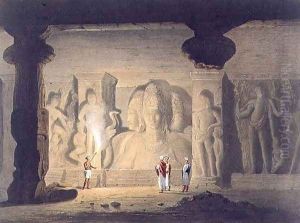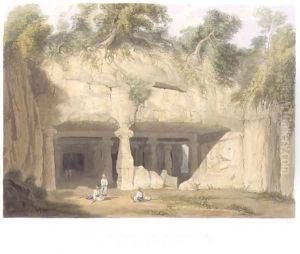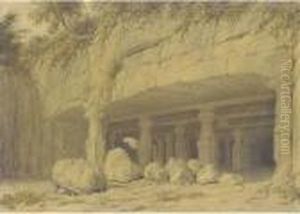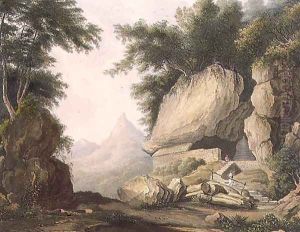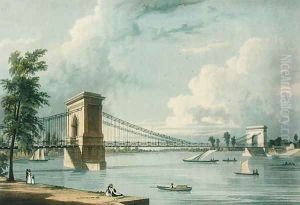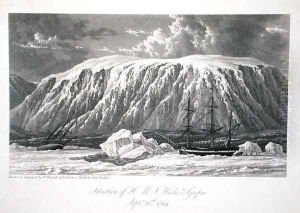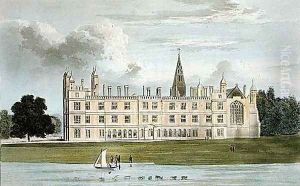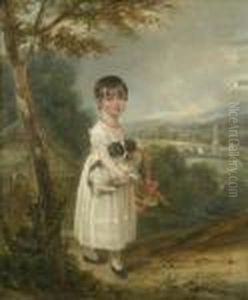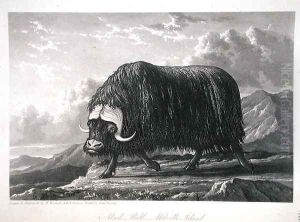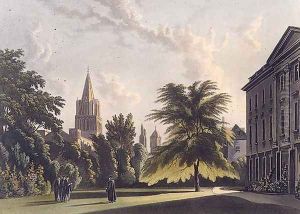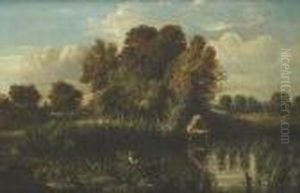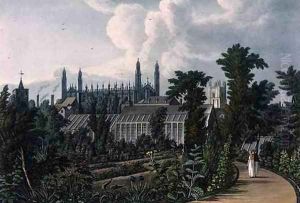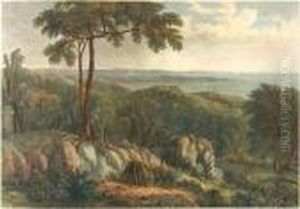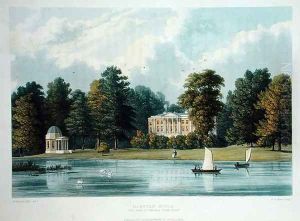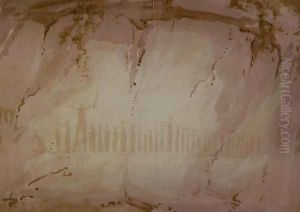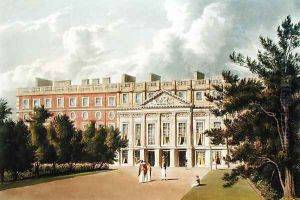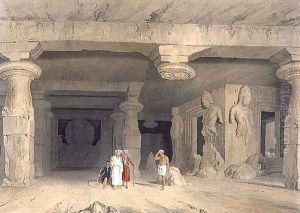





Interior of the Great Cave Temple of Elephanta, near Bombay, in 1803, from Volume II of Scenery, Costumes and Architecture of India, engraved by J. Baily, pub. by Smith, Elder and Company, 1830
-
About Reproduction
Discover the allure of art with our faithful reproduction of "Interior of the Great Cave Temple of Elephanta, near Bombay, in 1803, from Volume II of Scenery, Costumes and Architecture of India, engraved by J. Baily, pub. by Smith, Elder and Company, 1830", originally brought to life by the talented William Westall. Unlike posters or prints, our hand-painted oil painting breathes an unique sense of depth and texture into your space. Every detail, every stroke, and every texture is meticulously recreated, paying the perfect homage to William Westall and his artistic vision.
Owning this piece is more than just decoration - it's a statement of your refined taste in art. Let the vibrant colors and intricate details of this replica serve as a daily reminder of the beauty in our world. Elevate your decor and appreciate the richness of art with our replica of this masterpiece.
-
Painting Description
"Interior of the Great Cave Temple of Elephanta, near Bombay, in 1803" is an evocative engraving by J. Baily, featured in Volume II of "Scenery, Costumes and Architecture of India," published by Smith, Elder and Company in 1830. This work is based on an original drawing by William Westall, a renowned British landscape artist known for his detailed and picturesque depictions of exotic locales. The engraving captures the grandeur and mystique of the Great Cave Temple of Elephanta, a UNESCO World Heritage site located on Elephanta Island in Mumbai Harbour, near the city of Mumbai (formerly Bombay).
The Great Cave Temple, also known as the Elephanta Caves, is a network of sculpted caves primarily dedicated to the Hindu god Shiva. These rock-cut temples date back to the mid-5th to 6th centuries and are celebrated for their intricate carvings and monumental sculptures. Westall's drawing, and subsequently Baily's engraving, provides a rare glimpse into the temple's interior as it appeared in the early 19th century, highlighting the architectural and artistic splendor of the site.
The engraving showcases the main hall of the temple, characterized by its grand columns and the imposing statue of Trimurti, a three-headed representation of Shiva. The play of light and shadow in the artwork accentuates the depth and texture of the stone carvings, bringing to life the ancient craftsmanship that defines the Elephanta Caves. The detailed rendering of the temple's interior not only serves as a visual document of historical significance but also reflects the fascination and romanticism with which European artists and audiences viewed Indian culture and heritage during the colonial period.
Published in 1830, "Scenery, Costumes and Architecture of India" was part of a broader trend of illustrated travel books that aimed to document and disseminate knowledge about the diverse and rich cultures of the British Empire. The collaboration between Westall and Baily in this volume exemplifies the intersection of art and exploration, providing contemporary viewers with a window into the past and an appreciation for the enduring legacy of India's architectural marvels.
-
Lead Time & Shipping
When you order this oil painting replica, it typically takes 2-3 weeks to paint. If the artwork is more complex, it might need a little more time to ensure the best quality. Once it's ready, we'll send you a photo for your approval. After you give the green light, we'll ship it to you for free.
-
Return & Refund
We believe in the quality of our hand-painted oil painting reproductions, and your satisfaction is our priority. If for any reason, you are not completely satisfied with your purchase, we offer a 45-day return policy. You can return your artwork within 45 days of receipt and receive a full refund. Please note that the artwork must be returned in the original packaging and in the same condition as it was received.





